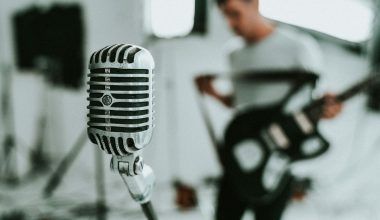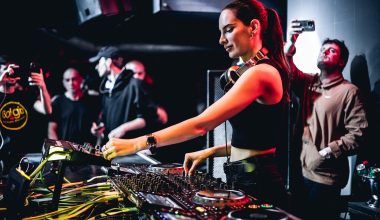Have you ever admired an album cover and wondered about its design? While the art and imagery often catch our eye, the dimensions of an album cover play a crucial role in creating that perfect look. Whether you’re a musician designing your first release, an art enthusiast exploring creative outlets, or just someone curious about the details, understanding album cover dimensions is more important than you might think.
Why Are Album Cover Dimensions Important?
When you think about it, an album cover is the first impression of the music inside. It’s not just a pretty picture; it’s a piece of visual branding that can influence someone’s decision to listen. But the size and dimensions of the cover are just as important as the artwork itself.
Imagine holding a vinyl record or looking at an album online. The cover needs to fit perfectly into its respective format, whether it’s a physical product or a digital display. This ensures the design looks professional and that the image doesn’t get distorted. So, let’s dive into the details of album cover dimensions to understand how they work in different formats.
Standard Dimensions for Album Covers
For physical and digital albums, standard dimensions are key. Here’s a breakdown of the most common ones:
Vinyl Records
Vinyl album covers are iconic, and their size plays a big role in their charm. The standard dimensions for a vinyl record album cover are 12 inches by 12 inches (30.48 cm by 30.48 cm). This square format provides plenty of space for creative artwork, allowing the design to shine.
Vinyl covers also include extra space for spine and back cover designs. While the front takes center stage, the back often contains tracklists, credits, and more. Keeping these dimensions consistent ensures the cover fits snugly in its sleeve.
CDs
Compact discs, or CDs, are much smaller than vinyl records, but their covers still follow a square format. The standard size for a CD cover is 4.724 inches by 4.724 inches (12 cm by 12 cm). This might seem tiny compared to vinyl, but it’s the perfect size to fit inside jewel cases.
Despite the smaller canvas, CD covers can still pack a visual punch. Many designers use bold fonts and vibrant images to make the most of the available space.
Digital Album Covers
In the digital age, many listeners access music through streaming platforms or downloads. Digital album covers are also square, with recommended dimensions of 3000 pixels by 3000 pixels. This size ensures high-quality visuals on any screen, whether someone is viewing it on a smartphone or a computer.
Most platforms require digital album covers to meet specific size and resolution standards. For instance, a resolution of 72 DPI (dots per inch) is standard for web display, but a higher resolution like 300 DPI is better for printing or large screens.
How to Choose the Right Dimensions for Your Album Cover
With different formats requiring specific dimensions, choosing the right size might feel overwhelming. Here’s a simple guide to help:
Know Your Format
First, decide how you’ll release your music. Are you creating a vinyl record, a CD, or a digital-only album? Each format has unique requirements, so knowing this upfront can save you time and effort later.
Think About Versatility
Even if your album is primarily digital, consider creating designs for physical formats. You never know when you might want to release a special edition on vinyl or CD. Designing for versatility ensures your artwork is ready for any medium.
Work with a Template
Using a template is one of the easiest ways to ensure your design meets the correct dimensions. Many graphic design programs offer album cover templates for various formats. These templates include bleed areas, which are crucial for printing to prevent unwanted white edges.
Common Mistakes to Avoid
Designing an album cover is an exciting process, but it’s easy to overlook some important details. Here are a few common mistakes to watch out for:
Ignoring Resolution
Low-resolution images can ruin a design. Always use high-resolution files to ensure your cover looks crisp and professional.
Not Accounting for Bleed
When designing for print, include a bleed area around the edges of your artwork. This ensures no essential details get cut off during printing.
Forgetting About File Formats
Different platforms and printers have specific file format requirements. JPEG and PNG are standard for digital covers, while PDF or TIFF files work better for print.
Tips for Designing a Stunning Album Cover
Now that you understand the technical aspects of album cover dimensions, let’s talk about design tips. After all, the goal is to create a cover that’s both functional and visually appealing.
Keep It Simple
Sometimes, less is more. A clean, minimalist design can make a powerful statement. Focus on one or two key elements, like a bold image or striking typography.
Reflect the Music
Your album cover should represent the music inside. Think about the mood, genre, and themes of your album. Whether it’s soft and dreamy or bold and energetic, let your cover reflect that vibe.
Use Quality Images
Whether you’re using photos, illustrations, or digital art, always opt for high-quality visuals. A pixelated image can make even the best design look amateurish.
Experiment with Colors
Colors can evoke emotions and grab attention. Don’t be afraid to play around with different color schemes until you find one that fits your vision.
The Future of Album Cover Dimensions
As technology evolves, so do the possibilities for album cover designs. Virtual reality and augmented reality are already opening new doors for interactive and immersive covers. While the standard dimensions will likely remain the same for now, the way we experience album covers could change dramatically.
For example, 3D modeling tools can create album covers that pop out of the screen. And with platforms like Spotify allowing for motion graphics and animations, album art is no longer limited to static images.
Final Thoughts
Understanding the dimensions of an album cover might seem like a small detail, but it’s a critical part of the creative process. Whether you’re designing for vinyl, CD, or digital platforms, getting the dimensions right ensures your artwork looks its best.
So, next time you’re admiring an album cover, take a moment to appreciate the thought and effort behind it. From the size of the canvas to the tiniest design details, every element plays a role in creating a memorable first impression.
For further reading, explore these related articles:
- Travis Scott Sicko Mode: The Story of a Song That Changed Music
- I Will Never Fall in Love Again Lyrics – The Song That Understands Your Heart
For additional resources on music marketing and distribution, visit Deliver My Tune.






